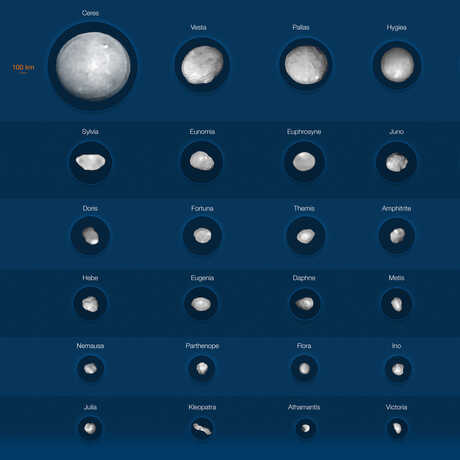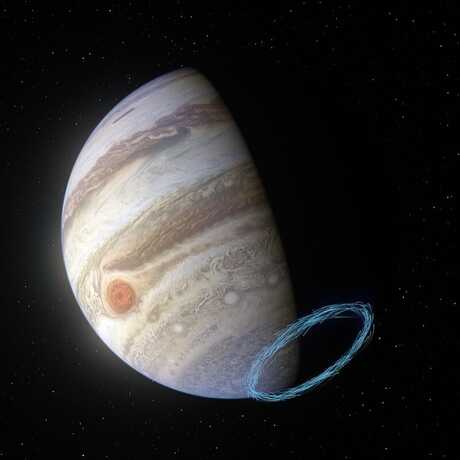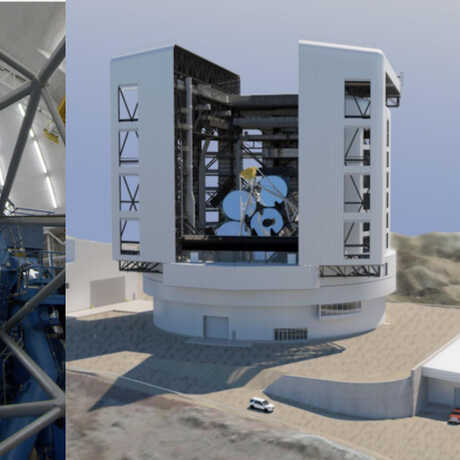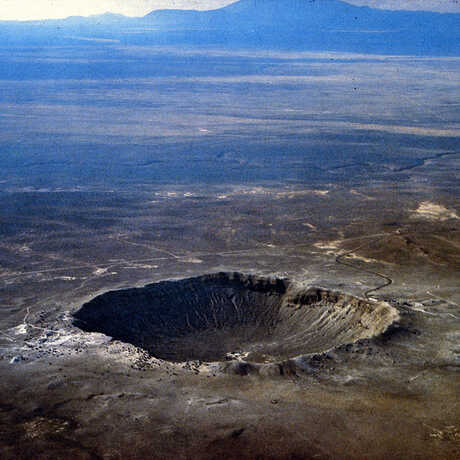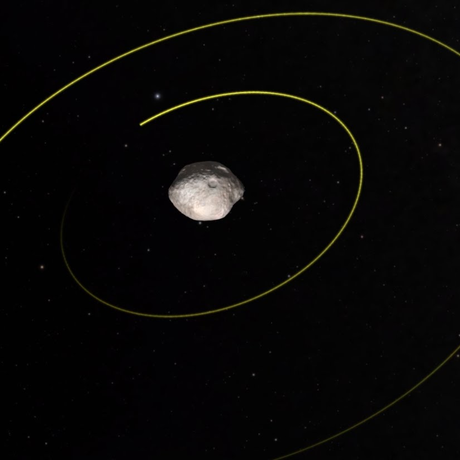Universe Update
Opportunistic Observations
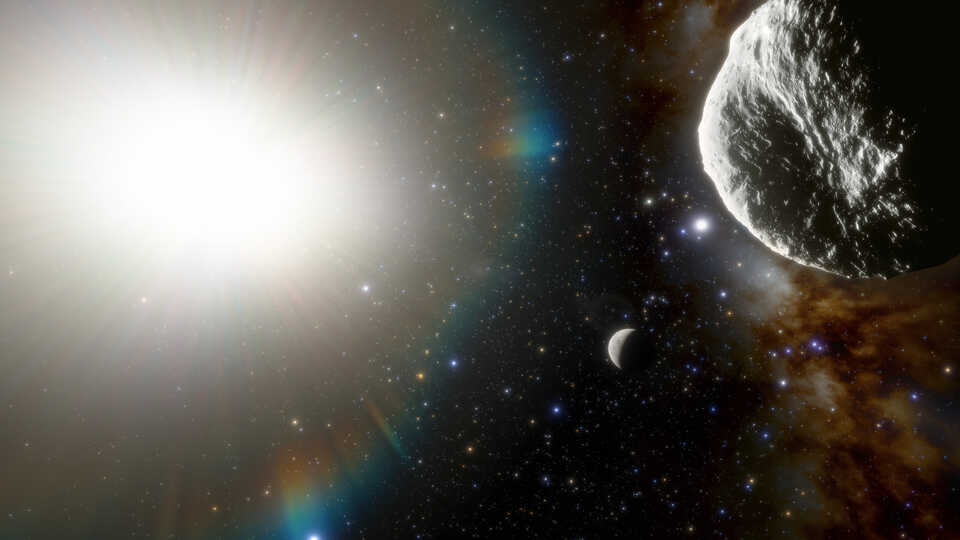
Illustration: CTIO/NOIRLab/NSF/AURA/J. da Silva
In our latest planetarium show Big Astronomy, we feature several telescopes in Chile, the discoveries they make, and the people who work at the observatories. We also briefly highlight a couple of the astronomers who work with the onsite staff and also use the telescopes for their own research.
Did you know that astronomers have to apply for time to use most major telescopes? They write proposals for their studies, and if approved, receive specific dates and times for observing. If the weather isn’t cooperating or something else gets in the way on their designated night (such as an earthquake, which happened when our crew was filming at the Gemini telescope), they’re out of luck. So not only do the stars literally have to align to make a discovery, they have to figuratively align, as well. And sometimes, a cosmological event will occur that supersedes regularly-scheduled observations. Essentially, it’s all about timing.
“Though telescope time for astronomers is very precious, the international nature and love of the unknown make astronomers very willing to override their own science and observations to follow up new, interesting discoveries like this.” That’s Scott S. Sheppard of the Carnegie Institution of Science talking about a recent opportunity to see the fastest orbiting asteroid yet observed.
The astronomers were using the Dark Energy Camera (DECam) mounted on the Víctor M. Blanco 4-meter Telescope at the Cerro Tololo Inter-American Observatory (CTIO)). As its name suggests, DECam was originally used for the Dark Energy Survey, which lasted from 2013 through 2019. But now, it’s primarily used for studying some of the most massive galaxy clusters in the Universe—or, much closer to home, tiny asteroids near the Sun.
Twilight, just after sunset or before sunrise, is the best time to hunt for asteroids that orbit close to the Sun, and that’s just when 2021 PH27 was spotted by DECam, on the evening of August 13. The following evenings, astronomers—using additional telescopes, including the Magellan Telescopes at the Las Campanas Observatory in Chile and others around the globe—made further measurements of the object, postponing their originally scheduled observations to get a sight of the newly-discovered asteroid.
And they found out that 2021 PH27 is close to our sun. Very close. The 1-kilometer-diameter asteroid gets as near as 20 million kilometers (12 million miles) and orbits our star every 113 days. Only Mercury is closer with a faster orbit. In fact, the asteroid is so close to the Sun’s massive gravitational field, it experiences the largest general relativistic effects of any known Solar System object.
Scientists are trying to determine the asteroid’s origins. It may have begun life in the Main Asteroid Belt between Mars and Jupiter and got dislodged by gravitational disturbances from the inner planets that drew it closer to the Sun. However, its high orbital inclination of 32 degrees could suggest that it might instead be an extinct comet from the outer Solar System that got captured into a closer short-period orbit when passing near one of the terrestrial planets. Since these interior asteroids are so difficult to see, future observations of 2021 PH27 could shed light on these questions and more.
“Understanding the population of asteroids interior to Earth’s orbit is important to complete the census of asteroids near Earth, including some of the most likely Earth impactors that may approach Earth during daylight and that cannot easily be discovered in most surveys that are observing at night, away from the Sun,” says Sheppard.
Meanwhile, a team of astronomers with telescope time on the Very Large Telescope (VLT) in Chile have discovered several terrestrial planets around a star 35 light years away called L 98-59. Among the findings are a planet with half the mass of Venus—the most lightweight exoplanet ever to be detected using the radial velocity technique, which measures the tiny wobble of the star caused by the tiny gravitational tug of its orbiting planets.
Among those planets could be an ocean world and possibly a planet in the star’s habitable zone. According to a study published earlier this month, the team was able to infer that three of the planets in the system may contain water in their interiors or atmospheres. The two closest to the star are probably dry, but might have small amounts of water, while up to 30% of the third planet’s mass could be water, making it an ocean world.
Furthermore, the team found “hidden” exoplanets that had not previously been spotted in this planetary system. They discovered a fourth planet and suspect there is a fifth, in a zone at the right distance from the star for liquid water to exist on its surface. “We have hints of the presence of a terrestrial planet in the habitable zone of this system,” explains lead author Olivier Demangeon.
"The planet in the habitable zone may have an atmosphere that could protect and support life,” says co-author María Rosa Zapatero Osorio. To find out, the team hopes to continue to study the system with the forthcoming NASA/ESA/CSA James Webb Space Telescope (JWST) and ESO’s Extremely Large Telescope (ELT), under construction in the Chilean Atacama Desert and set to start observations in 2027. “The HIRES instrument on the ELT may have the power to study the atmospheres of some of the planets in the L 98-59 system, thus complementing the JWST from the ground,” explains Zapatero Osorio.
“This system announces what is to come,” adds Demangeon. “We, as a society, have been chasing terrestrial planets since the birth of astronomy and now we are finally getting closer and closer to the detection of a terrestrial planet in the habitable zone of its star, of which we could study the atmosphere.”
Catch Big Astronomy to learn more about Chilean telescopes, and opening on November 5, our new show, Living Worlds, will provide more information on the search for life beyond Earth.
